The constant pull, achy arm muscles and red blisters that appear on fingers after riding a hard, dull mouthed horse isn’t something any rider wants to experience. When it comes to communicating simple demands like steering and speed control with horses to even more advance training with a young prospect, they all must learn how to carry themselves correctly first. As a result, their under carriage and back are lifted by the rider’s cues to become round in body, responsive and soft in their mouths. No matter the skill set or discipline, a flexible give-and-take relationship is needed between the rider’s hands and legs and the horse’s sides and mouth, driving them forward into their bit.
The goal to obtain a soft “feel” from the horse’s mouth and face to the rider’s hands through the reins, is confusing to teach, extremely harder than it looks and is different with every rider and horse combination. Many trainers agree that they can’t teach what that “feel” should feel like, but all know it comes from hard work, hours in the saddle on different horses and the rider’s individual senses.
Trainer Alan Fisher, of Eastover, North Carolina, who’s horsemanship spans over 20-years and carries multiple circuit championships, Reichert Celebration wins and World and Reserve World titles throughout his career, says the best way to learn “feel” is to ride horses who have been trained to be flexible, soft and giving through their poll, face and mouth- then ride horses who are testy, tough in the bridle and bullish with the bit to compare.
“Creating a soft mouth on a horse takes time, patience, unspoken communication and plain common sense,” he said. “The most important part to learn is how to determine if you have the correct ‘feel’ on a horse and then learning the ‘timing’ of rewarding the horse for being correct by immediately letting go of the rein pressure with precise timing when the horse is up underneath themselves and driving from their back end. If you aren’t supporting your horse’s ‘feel’ by picking up their ribcage with your legs so they follow through and come into the bit they’ll start to fall apart and have trouble being heavy in their mouth and body.”
Fisher explains that an experienced trainer or coach may be needed to help rider’s sort through and gauge the best way to approach this technique, re-start the process properly, or give insight on how to fix any issues that need an extra set of eyes or tweaking.
Don’t always blame the bit
The dull-mouthed horse, the heavy leaner, the iron jaw, the evader, the chomper, the bracer and the fighter all have similar issues going on when bridled and a lot of the time it doesn’t have anything to do with the bit in their mouths.
All-around trainer, coach and carded judge for NSBA and AQHA, Jamie Dowdy has a life-long passion for horses that started at a very young age at her parents’ ranch, Hartman Farms in Marshfield, Missouri. Dowdy carries AQHA and NSBA World Reserve Champion titles in Junior Western Riding and Level 2 Halter, says it’s imperative to rule out physical discomfort a horse may be having in their mouths that gives the impression of bit trouble.
“A yearly dental exam is needed, especially before a bit is introduced to a young horse,” she said. “The 2 to 4-year old can be experiencing mouth and teeth soreness due to shedding baby caps and possible wolf teeth that need to be extracted. Older horses need routine dentals for maintenance and preventative measures, to stay ahead of any developing problem before symptoms turn painful.”
There could also be other issues preventing the desired response.
“Sometimes a bad bit response can happen when horses have weakness that makes it difficult to hold their head, neck and body, as strength issues stem from their back,” Dowdy explained. “It could be that the horse hasn’t been taught to hold their body correctly from their poll all the way underneath to their back to move through their hocks and more muscle conditioning along their vertebrae is required before they can be malleable in their mouth, head, neck and back.”
One more significate reason why a horse could be unhappy being ridden or annoyed with the bit in their mouth, a stomach problem, like ulcers, says Fisher.
“With all the demands and the crazy schedules, we ask show horses to keep, a lot of times we may think a horse is negatively responding to the bit, but in reality, it’s just the horse expressing physical or mental discomfort,” he explained. “I’ve found that a horse’s mouth is in direct contact with their belly, so we use preventive care and proven treatments to maintain and ease stomach stress.”
The Bit History
Fisher says every rider would benefit from learning the control points of different bits and the mechanics behind mouthpieces and what exactly should be achieved with each different type of bit.
“Knowing how certain bits should sit and fit in a horse’s mouth could help you avoid serious problems. Before riding in any kind of a ported bit, riders should understand how leverage and curb straps work together,” he said. “It’s always smart to ask a couple of bit related questions whenever riding a new horse to take the guess work out of what bits to avoid and what bits to steer towards based on the horse’s bit history.”
In the wrong hands
A lot of damage can be done to a horse’s mouth when the wrong bit is used in the wrong set of hands. If a rider is having to yank and wrench at their horse’s mouth to stay in control or obtain the proper headset and movement, there’s no doubt the rider and horse will need to re-learn some basics and how to effectively communicate with each other.
“You should envision riding using balanced hands, legs and seat while moving together on the path of less resistance, which allows you to set yourself and your horse up for successful learning and performance,” Fisher said.
Trainer Shawn Alter owns Shawn Alter Quarter Horses where he concentrates on selling show horses working with many other trainers near his home in New Alexander, Pennsylvania, specializing in training the Western Pleasure, Hunter Under Saddle, and All-Around events. The first things Alter reminds his riders to do is simply…relax and ride with an ask-tell mentality.
“Nerves and being scared is why most riders have heavy hands, sometimes it’s all they know,” he said. “You must take the time to practice and gain the muscle memory of going into their mouth softly, asking first, giving the horse a chance to respond, then if needed you should be more assertive and ask your horse again, always softening with your fingers when you get off of their mouth to create a nice flow without any yanking. They will learn quicker what spot you want their body and frame to be in when you take the pressure away at the proper time. To be efficient and a well-rounded rider you’ll need to learn to ride more with your legs and feet and have less pull on the reins.”
A bit reactive
“A lot of times, horses learn to be angry at the bit when they feel rushed or pushed beyond their abilities. Horses who haven’t learned to give to the bit or choose not to give, tend to turn defensive and act-out,” trainer Melissa Jones said. Jones, along with her husband Chris own Jones Performance Horses in Reelsville, Indiana, both have winning Congress and World Championships and train in the all-around events.
“In young horses, I have found that it’s common when training gets deeper into details and the learning demands are more present, sometimes the horse will over-react, usually the easiest and most obvious thing for them to blow-up and complain about is the bit in their mouth,” Melissa said. “I always progress the learning as clearly as I can and slowly so I don’t overwhelm the greener horse.”
Going back to the basics and covering what you and your seasoned show horse already know and are good at while introducing some non-routine exercises will give a positive change of pace and view into their work ethic and mindset.
“This also can alleviate stress and stop your horse from becoming sour,” Melissa explained. “I like to put my seniors in a snaffle and make things more agreeable on all levels, maybe work on leg placement for trail with stepping over poles and the normal maneuvers like transitions, pivots, stopping and backing up. Once we have taken a step back, then we put on the show bit without any fuss or overreacting, still working on the same things with same soft hands adding small amounts of new factors to keep things fresh, even trying a similar bit to what they already like, just to offer something a little new and if it’s a no-go then their old bit goes right back in.”
Don’t lean on a snaffle
The Gooding family, husband Garth and wife Sonnesa, along with their son Austin, partnered with Michelle Bauer and run Bauer & Gooding Show Horses in Fennville, Michigan, this team has produced over 150 World and Reserve World Championships in the All-Around with APHA, NSBA and AQHA. When the Goodings ride in a snaffle, they let the bit do work and use a lot of side-to-side motions with their hands. The rule around their arena is no jerking on a horse’s mouth.
“The more you jerk the more the horse will want to get away from that pressure, meaning they’ll want to get away from you,” Garth said. “We also don’t do much holding in a snaffle because our goal is for them not to lean on the bit and holding will reinforce leaning.”
Building a bit foundation
The Goodings remind riders to remember that all horses are different, from the shape or their mouth to their personality, so your favorite bit might not work on every horse in every situation.
“We have a wild variety of bridles, mild bits for horses that like to over-give their face and then many bits that range in different degrees of severity,” Garth said. “There’s a misunderstanding from people about using a bigger bit, good trainers will use those bits so they have to pull and bump on the horse’s mouth less – not more. Minor corrections go a lot further with those more direct bits. If you put in a mild bit on a dull faced horse, you’re going to have to pull and bump way more than if you just go into a slightly higher-level bit. From the beginning, a horse needs to learn to be soft in their face with a snaffle, which comes from a good rider with soft hands (and no jerking) and progress from there. You’ll always be able to go back to that snaffle foundation if you run into softness problems down the road.”
As training and maturity progresses, the Goodings move into a short shank bit to keep the soft feel on the horse’s face, remembering to never be too stern or jerk on the reins. “We don’t want the all or nothing mentality a horse can develop when we use our hands. When you need to bump gently on a horse’s mouth, you should stay loose in the wrists and arm so you’re not trying to over muscle them. One common thing we see with riders who want to use their whole arm to bump the horse’s in rhythm. It’s important for you to bump through your wrists, in all different rhythms to create that nice balance without the horse following your hands right back out with their chin and nose,” Austin said.
A little bit of training aids
“I use draw-reins or a training fork sparingly, short term, for specific purposes and only when I feel it’s safe to introduce those aids to a horse. You can’t use them in the show ring so it’s best that riders don’t rely on them. I mainly use these to simplify things and work on the horse’s body and leg placement when more guidance is needed,” Alter explained.
When one of Fisher’s older horses needs to be sharper in their responses to his cues and directions, he likes to put in a slow-twisted snaffle with attach draw-reins.
“This allows me to have a better connection with more control without having to put in a shanked bit with curb chain on. Sometimes, horse will start to develop a bad habit in the bridle or they may just feel like questioning your methods,” he said. “By putting on this type of set-up, you can ask a horse to meet your legs so you can help lift their shoulders up and kick their hip over as a reminder on how you want them to travel with you.”
Hunter Under Saddle tidbits
Alyse Roberts has procured several NSBA, Congress, AQHA and APHA World Championships, mainly in the Hunter Under Saddle, she owns Alyse Roberts Performance Horses located in Purcell, Oklahoma, shares that Hunter Under Saddle horses need more rider contact to support the balance of a bigger floaty stride than the longer drape of western reins for the pleasure.
“In both disciplines, the more leg used the better no matter how big or short the horse’s stride may be,” she said. “The correct Hunter profile should show have the horse’s neck and nose out in front of the vertical, with a rider who has just enough contact with their hands to the horse’s mouth to tip their face slightly in without having the distractions of loosening and tightening of the reins. Their head should stay consistent and you should never see the corners of the horse’s mouth move by any pulling of the bit.”
“When a horse is rooting and pulling on their bit rather than bending, I push them forward in a sitting trot, leaving the head and mouth alone, using lateral movements and circles to push them into using their back end because the whole front end is heavy, from feet to mouth,” said trainer and coach Carol Johnson, of Johnson Performance Horses at the Red Horse Ranch in Monee, Indiana. In her show career, she’s earned a AQHA Congress Championship, many Reserve Championships and multiple Top10 Titles and World Show Finalists, she continues to shape many successful youths as she takes great pride in her coaching program. “An exercise that works on the bending and flexibility is one I use a lot, I come off the rail and every two strides I bend the horse’s neck and head to the right then the left using slight squeezes from my fingers and a lot of leg for encouragement to come down into the bit. This not only softens them but reinforces how you want them to achieve the correct and functional form needed for the taller and bigger-strided Hunters.”
The first thing Johnson teaches her Hunt seat riders is a half-halt release, the squeeze-hold-release. “A horse should drop their head when they feel a rider squeeze with their fingers and calf muscles and the rider should immediately let the rein and calf pressure go as soon as the horse does that it’s asked. When their behavior needs to be rewarded, and the only way you can do so is by developing effective timing, an internal clock that everyone has,” Johnson said. “The frustrating part for our horses is not all riders have that fine-tuned timing. I’d rather see a rider who releases hand and leg pressure to soon rather than too late. Hanging on to long defeats the purpose and can upset a horse who is trying to do their job but the rider keeps getting in the way.”
To help her clients, Johnson puts them on one of her easier horses to ride, the one who know their job and perform well. “I believe horses are the best teachers when it comes to feel and timing. I’ll put a heavy-handed rider on a lounge line and take away the convenience of having reins. The horse will tell me everything I need to know. If the horse breaks gait, the rider’s too soft and isn’t pushing with their legs enough. If the horse is moving with a high head and disconnected hollow back then the rider isn’t using their legs to support the lift need to keep the horse in frame.” Johnson explains that she’ll use a lounge line lesson to also keep riders from using rein leverage to stay balanced and in pace with their posting. Hunt seaters have huge bouncy strides and you need strong leg muscles and a solid core to properly ride and not lean or tug on your horse’s mouth to stay in rhythm to ultimately stay balanced in the saddle,” Johnson said.
A bit western
Dowdy mentions that riding a spur-stopped horse takes a special touch. “I don’t like to ride with force, I want to be able to touch a horse’s ribcage and tickle them with my spurs to get their attention. It basically turns into a yes-no-maybe game to find out how much or how little spur and leg pressure is needed to get their right response. This can change on your horse as more training is done and once you and your horse become better at reading each other’s body language and resolve differences with the least amount of hand, rein and spur correcting.” The more you watch others ride the more you’ll learn. What’s even more effective is having someone video your rides. You’ll be able to see your strengths and weakness in yourself but also in your horse, Dowdy suggests.
Fisher will use everything in his tool box to help a horse yield to pressure without losing their attention. He says that it’s not about the low headset and slow-moving legs. “When you ask for a stop, you don’t want to be abrupt with your hands or spurs, your horse will respond the same way you ask and they’ll pop their head up quick. Sometimes getting a horse to calmly walk around the arena at different speeds when asked, yielding off of leg or spur, bending through the entire body and learning to stop without throwing their head that disrupts the focus of the lesson is one of the biggest breakthrough training moments you can have,” Fisher said.
Bit of a problem
“You can’t train a scared horse,” Fisher says. “Trust and respect are so important and should be established first before a bit goes in their mouth. A horse who doesn’t trust their rider will run from the bit trying to escape and a horse’s who doesn’t respect their rider may try to rip the reins out of the rider’s hand by biting the bit quickly and rooting out and down with their neck. Another way a horse can try to protect themselves and their mouths is by evading the bit. You’ll feel your horse over rounding bringing their chin to their chest. If a horse learns to hide from the bit, they’ll run right through it, which gives you no control over your horse. This is one of the most dangerous situations to encounter and one the hardest things to un-train your horse to do,” Fisher warns.
Pushing to the bit
The Goodings’ explain that you want every little move you make with your hand or leg to mean something when riding. “Riding with a purpose is pushing your horse through your legs to be soft in their mouth. You certainly want to have that feel of being able to push all the time during your ride, especially with a western horse, rather than feeling like you always have to ride the brakes.” Austin shares some good advice he heard from World renowned horseman and trainer, Cleve Wells, that has stuck. “Cleve once said, ‘if you aren’t pushing—you aren’t winning,’ and it’s so true,” Austin said.



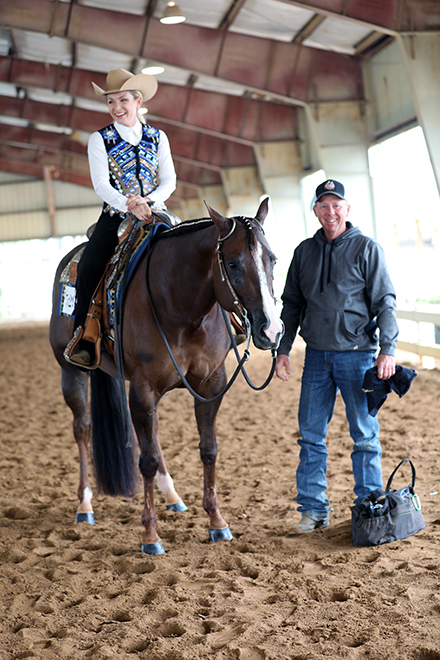
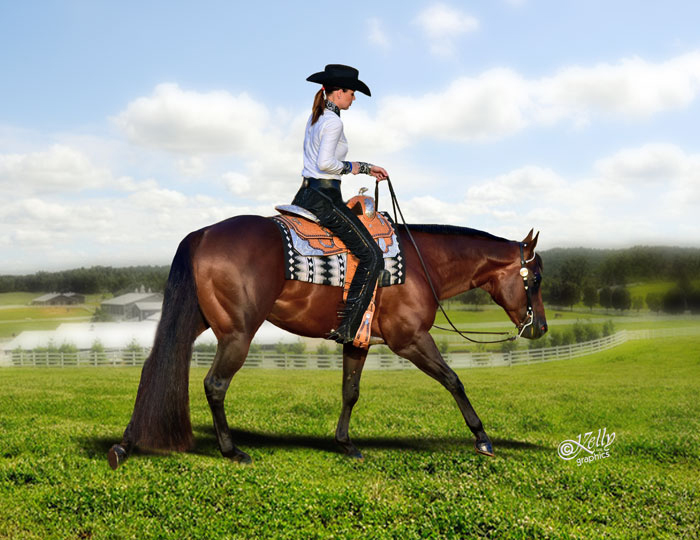
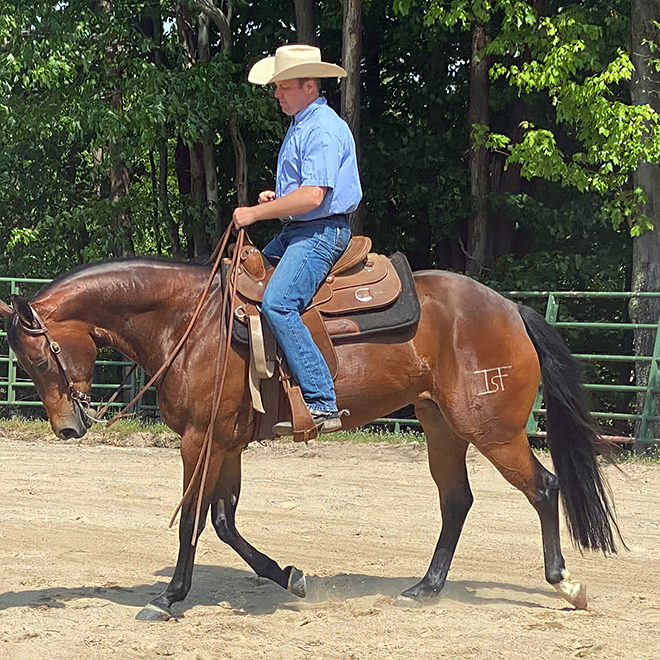
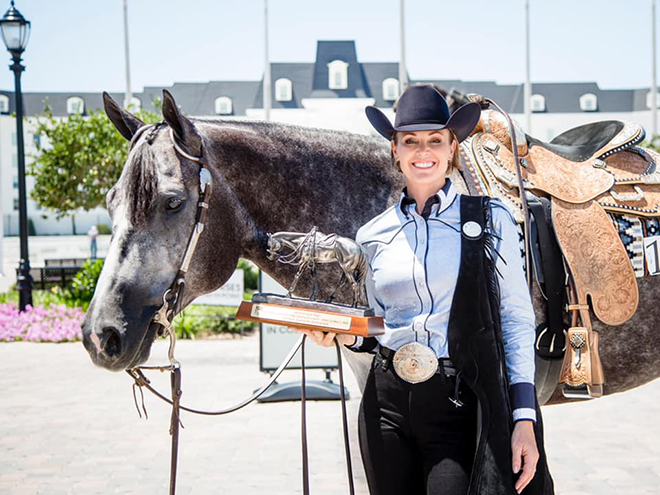
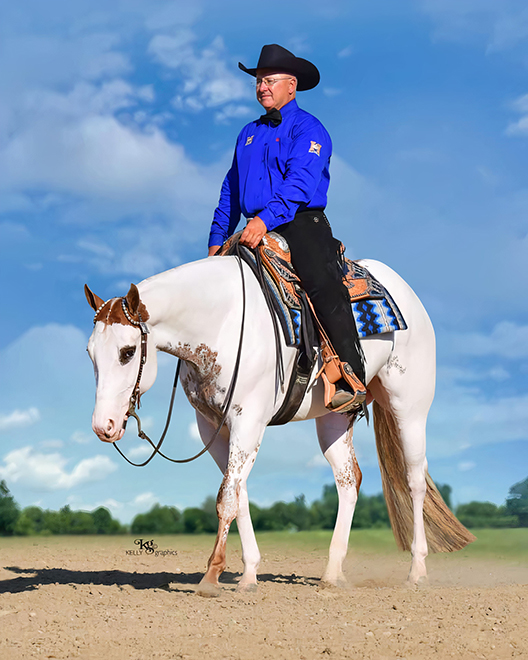
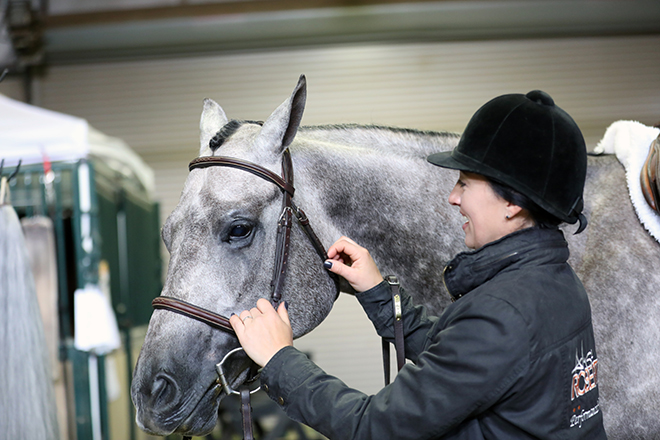
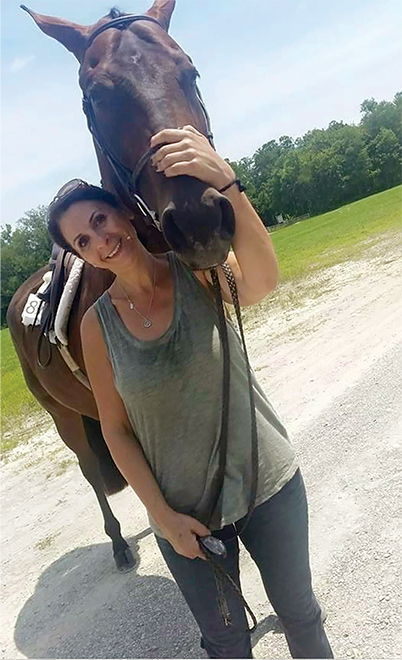
You must be logged in to post a comment Login